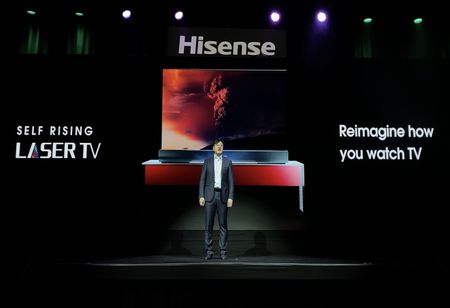
Hisense Launches Self-Rising Laser TV at CES 2020


CEO Insights team , Press Release
Dr. Lin Lan, Vice President, Hisense Group, announces that with a life-long license of Toshiba brands on TVs, the group is going to challenge an annual target of 40 million TV sales units, aiming at the top two rankings globally. While, Dr. Liu Xianrong, Chief Scientist, Hisense Laser Display, shares the latest Hisense Laser TV technology in three themes, color, audio and form.
The company believes that these innovations will further match consumer needs, and continue to lead in the direction of TV's future development. Presuming that the ideal form of television for the family is integrated into the entire home, and only appears when needed; the company is sure that the Self Rising Laser TV equipped with features like a rolling screen capable of rolling & maintaining peak optical performance is the need of the hour.
The company believes that these innovations will further match consumer needs & continue to lead in the direction of TV's future development
“Hisense firmly believes that laser display will dominate in the future,” mentions Dr. Lin, in his speech. He also notes that that since the first laser TV release in 2015, the company has made a significant progress by growing the size from 75 inch to 150 inch, and enhancing the picture quality from monochromatic light source technology to full-color.
The launch of the 75 inch & the 100 inch TriChroma Laser TV is a breakthrough in color technology as it enables the color display of laser TV to surpass all colors existing in nature with its capability of reaching 90 percent of the colors recognized by the human eye. Moreover, it is the only display product that meets the BT2020 standard, the top standard for future TV color. At the exhibition, Dolby will perform the first technology demonstration of Dolby Vision on the TriChroma Laser TV.
As to the audio innovation, Hisense holds the opinion that screen-sound truly realizes the integration of sound and picture and pioneers the technology of sound generation for cellular bionic screens. This technology makes the positioning of the sound clearer and enables the sound to spread farther and perform better in detail.